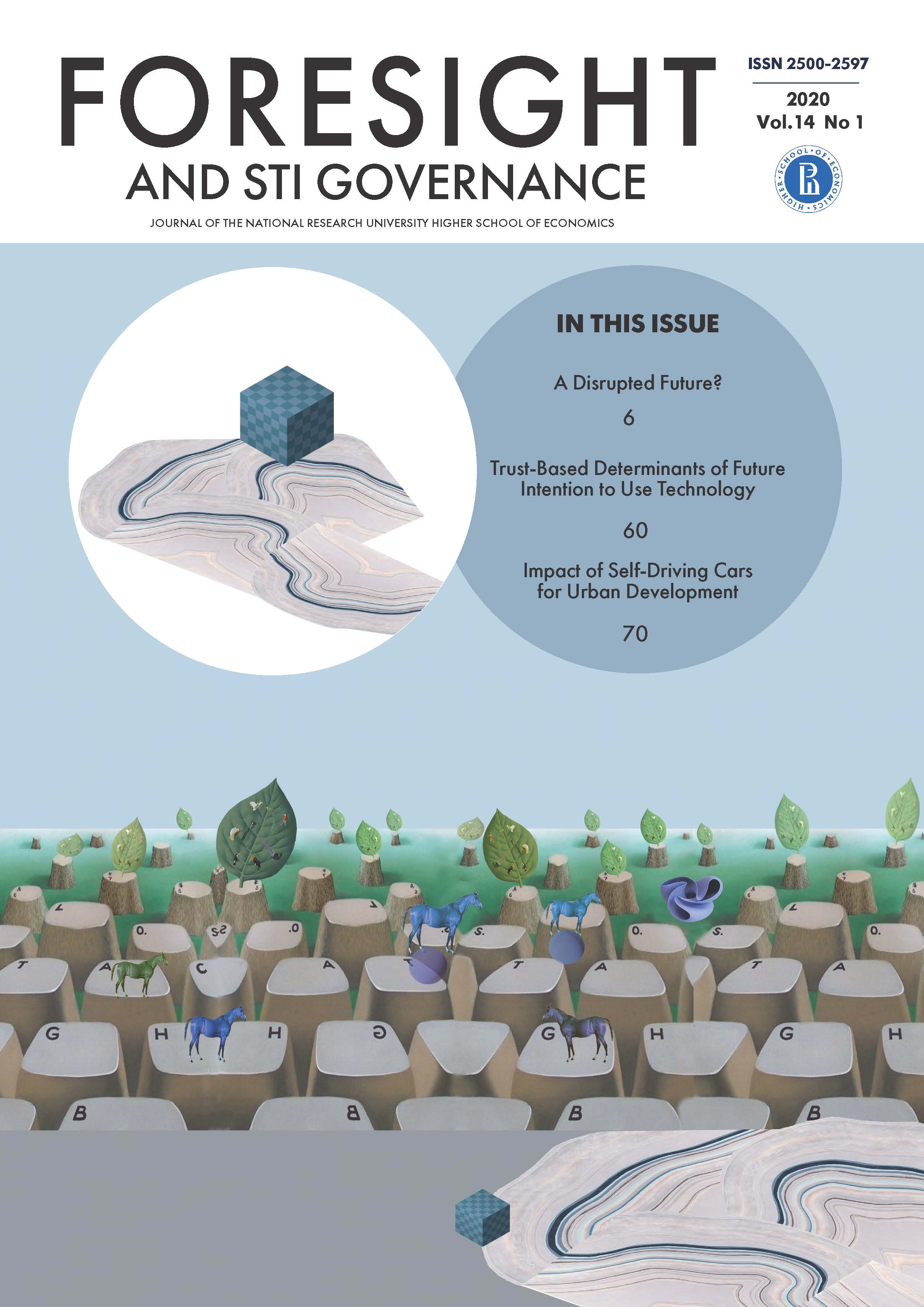Abstract
The paper attempts to evaluate the impact of digital transformation upon productivity using the multi-level structure model of a random interaction effect based on the Bayesian approach to cross-section data. Digital transformation significantly raised general price levels in Russia and has had consistently significant positive effects upon economic growth through the random interaction effect. Therefore, in Russia in 2018, digital transformation played a role as a driver of technological progress that prompted economic growth rather than economic stability.
References
Akerlof G.A. (1984) Gift Exchange and Efficiency-Wage Theory: Four Views // The American Economic Review. Vol. 74. № 2. P. 79-83.
Anderson T.W., Rubin H. (1956) Statistical Inference in Factor Analysis // Proceedings of the Third Berkeley Symposium on Mathematical Statististics and Probability. Vol. 5. Berkeley, CA: University of California Press. P. 111-150.
Ball L., Romer D. (1990) Real Rigidities and the Non-Neutrality of Money // The Review of Economic Studies. Vol. 57. № 2. Р. 183-203.
Bartholomew D., Knott M., Moustaki I. (2011) Latent Variable Models and Factor Analysis: A Unified Approach (3rd ed.). Hoboken, NJ: John Wiley & Sons. Р. 157-189.
Caballe J., Santos M.S. (1993) On Endogenous Growth with Physical and Human Capital // Journal of Political Economy. Vol. 101. № 6. P. 1042-1067.
Davis J.M.V., Guryan J., Hallberg K., Ludwig J. (2017) The Economics of Scale-Up. NBER Working Paper no 23925. Cambrdge, MA: NBER.
Draco M., Sadun R., van Reenen J. (2015) Productivity and ICT: A Review of the Evidence. CEP Discussion Paper 749. London: Center for Economic Performance.
Friedman M. (2017) Quantity Theory of Money. The New Palgrave Dictionary of Economics. P. 1-31. Режим доступа: https://miltonfriedman.hoover.org/friedman_images/Collections/2016c21/Palgrave_1987_c.pdf, дата обращения 24.11.2019.
Goldfarb A., Greestein S.M., Tucker C.E. (eds.) (2015) Economic Analysis of Digital Economy. Chicago: University of Chicago Press.
Had?eld J. (2010) MCMC Methods for Multi-Response Generalized Linear Mixed Models: The MCMCglmm R Package // Journal of Statistical Software. Vol. 33. № 2. P. 1-22. Режим доступа: , дата обращения 15.10.2019. DOI: https://doi.org/10.18637/jss.v033.i02
Hadfield J. (2019) MCMCglmm Course Notes. Режим доступа: https://cran.r-project.org/web/packages/MCMCglmm/vignettes/CourseNotes.pdf, дата обращения 15.10.2019.
Howitt P. (1999) Steady Endogenous Growth with Population and R&D Inputs Growing // Journal of Political Economy. Vol. 107. № 4. P. 715-730.
Jones C.I. (1995) Time Series Tests of Endogenous Growth Models // The Quarterly Journal of Economics. Vol. 110. № 2. P. 495-525.
Joreskog K.G. (1990) New developments in LISREL analysis of ordinal variables using poly-choric correlations and weighted least squares.
Lawley D.N., Maxwell A.E. (1962) Factor Analysis as a Statistical Method // Journal of the Royal Statistical Society. Series D (The Statistician). Vol. 12. № 3. P. 209-229.
Lucas R.E. (1972) Expectations and the neutrality of money // Journal of Economic Theory. Vol. 4. № 2. P. 103-124.
Moulin H. (1986) Characterizations of the Pivotal Mechanism // Journal of Public Economics. Vol. 31. № 1. P. 53-78.
Quality and Quantity. Vol. 24. P. 387-404.
Solow R.M. (1987) We'd Better Watch out. Review of S.S. Cohen and J. Zysman, Manufacturing Matters: The Myth of the Post-Industrial Economy // New York Times. 12 July 1987. Режим доступа: https://pdfs.semanticscholar.org/cef1/49b3dbdaa85f74b114c2c7832982f23bcbf0.pdf?_ga=2.192560554.1655282957.1574608201-410801543.1574608201, дата обращения 26.10.2019.
Triplett J.E. (1999) The Solow productivity paradox: What do computers do to productivity? // The Canadian Journal of Economics. Vol. 32. № 2. P. 310-334.
Westland J.C. (2010) Lower Bounds on Sample Size in Structural Equation Modelling // Electronic Commerce Research and Applications. Vol. 9. № 6. P. 476-487.

This work is licensed under a Creative Commons Attribution 4.0 International License.

